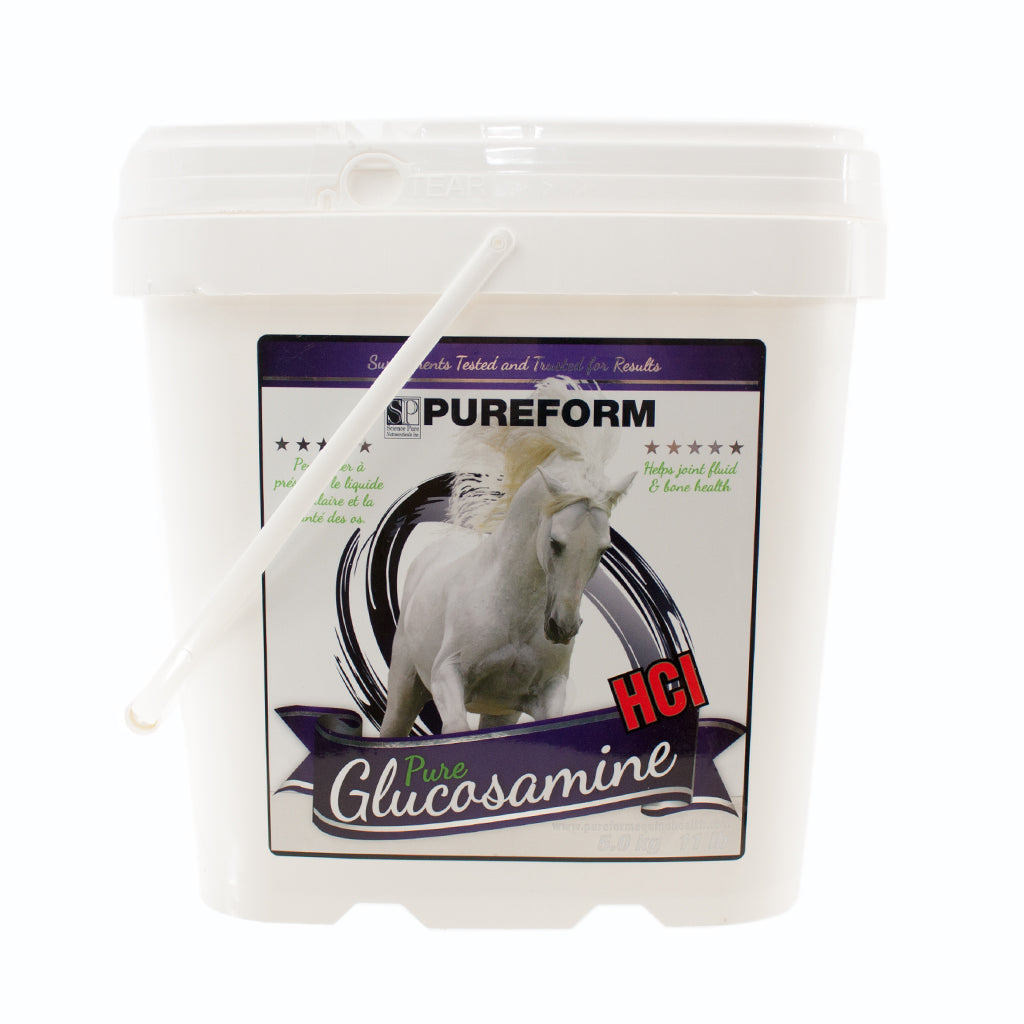Pureform Glucosamine HCL 6kg Science Pure Nutraceuticals
$ 334,98 $ 100,49
Glucosamine is a major precursor and or building block of glycosaminoglycans (GAGs). GAGs include hyaluronic acid, chondroitin sulphate, keratan sulphate and others. Because chondroitin and keratan are sulphated at key sites, they are also referred to as polysulphated GAGs or PSGAGs.
GAGs and PSGAGs are components in the structural matrix of joints, which involve synovial fluid, cartilage, tendons, ligaments, bones, blood vessels and capillaries. They are also structural components of membranes in the digestive and respiratory tracts.
Hyaluronic acid and keratan sulphate are major and minor components, respectively, of synovial fluid. Synovial fluid is degraded and lost during inflammatory stresses but can be reestablished rapidly with oral glucosamine supplementation. Thus, glucosamine has the ability to decrease pain in articular joints, by replenishing synovial fluid and reducing friction through a repair or rebuilding process rather than inhibiting pain signals.
Proteoglycans, the major component of the cartilage matrix consists of hyaluronic acid, chondroitin sulphate and a protein branch linking the two. During inflammatory conditions, enzymes are released which degrade proteoglycans, leading to compromised articular cartilage function.
Glucosamine interferes with the action of these enzymes, reducing and containing the level of damage while supplying a vital raw material for rebuilding the proteogycan matrix.
Glucosamine is necessary for the manufacture of mucin, a crucial protective component of the digestive tract.
Glucosamine is a naturally occurring substance in the body normally found in high concentrations in the joint cavities.
Fast Shipping and Professional Packing
We can offer a variety of shipping options thanks to our long-term relationship with UPS FedEx DHL. Our warehouse employees will pack every item to our exacting specifications. The goods you send us are checked thoroughly and properly secured before shipping. Every day, we deliver to thousands of clients in different countries. This shows how we're dedicated to be the largest online retailer in the world. Both Europe and the USA have distribution and warehouse centers.
Note: Orders with more than one item will be assigned a distinct processing period for each item.
Before shipping, all ordered items will be thoroughly examined. Most orders are delivered within 48 hours. The expected delivery time will be between 3 and 7 days.
Returns
We don't manage the stock at our warehouse and factory. The actual inventory can change at any moment. Be aware that your order will be unable to fill once you've placed your order.
The policy is for 30 days. Unfortunately, if 30 days have passed since you purchased your item, we cannot give you a refund or exchange.
In order to be eligible for a refund the item must be unused and in the same condition as you received it. It must also still be in the original package.
Related products
Ladies Riding Jackets
Blankets
Stirrups & Leathers
Ladies Lifestyle
Cavalleria Toscana 3-Way Hooded Waterproof Jacket Cavalleria Toscana
Stirrups & Leathers
Ladies Riding Breeches
Cavalleria Toscana American High Rise Riding Breeches – Bordeaux Cavalleria Toscana
Ladies Riding Breeches
Cavalleria Toscana American High Rise Riding Breeches – Dark Chocolate Cavalleria Toscana
Ladies Riding Jackets
Ladies Riding Breeches
Cavalleria Toscana American High Rise Riding Breeches – Beige Fantasy Cavalleria Toscana














































